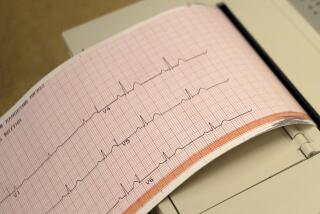Diagnosing Tool Just What Doctor Ordered
ROCHESTER, N.Y. â A 4-year-old boy arrived at an Iowa hospital with a fever, swollen lymph glands and various visible clues: a diffuse rash, cracked lips and peeling skin around his fingernails.
Dr. Mark Graber, an emergency room veteran, quickly suspected Kawasakiâs syndrome, a rare heart condition that can lead to fatal aneurysms. The boy had already visited several doctors and ERs âand the diagnosis was missed,â Graber said.
To ensure he was on the right path, Graber typed his observations into a visual-diagnosis software application designed to pinpoint illnesses that appeared on the skin, such as chicken pox, Lyme disease, AIDS complications or anthrax exposure.
Honing in on an explanation for rashes, blisters or lesions might seem a fairly straightforward task. But thousands of diseases have visible symptoms, plus thousands of uncommon manifestations, and front-line doctors are often stumped.
Dr. Art Papier saw a growing need for a technological answer to the question, âWhat am I looking at?â as the ranks of medical dermatologists were steadily depleted in the 1990s by a shift to cosmetic surgery.
âYou either train more skin experts, which weâre not doing, or you make the generalists smarter,â said the University of Rochester associate professor of dermatology who in 1999 co-founded Logical Images, the developer of VisualDx software.
VisualDx contains nearly 10,000 medical photographs culled from 1.2 million accumulated since the 1940s in private archives and colleges, chiefly UCLA and New York University.
The software was licensed to hospitals, medical schools and internists in March 2001.
The market grew dramatically after anthrax attacks in September and October 2001 killed five people, rattling a nervous nation. The software already had a biological warfare segment showing in vivid color the progressions of long-eradicated diseases like smallpox.
With the government allocating more than $1 billion a year to improve bioterrorism readiness, Logical Images has deals with big-name clients, from the federal Centers for Disease Control and Prevention to hospital systems in New York City and Washington, D.C.
Propelled by a $1.5-million Army contract in August to supply medical-training centers at 13 U.S. bases, its sales quadrupled this year to $4 million.
Hospitals are using the tool to handle a panoply of illnesses. Mississippi uses it to train doctors in tracking dozens of communicable diseases, such as syphilis, that by law must be reported, Papier said.
Priced from $200 to $20,000 a year, depending on the number of users, VisualDx helps in the task of moving healthcare âfrom a memory-based to a guidance system by structuring knowledge to solve problems,â he said.
In place of the century-old method of flipping through weighty medical atlases containing one or two pictures of each illness -- usually the classic or severe symptoms -- the software displays multiple high-resolution images of how an illness can present itself.
âYou see different body locations, skin tones, stages of the disease,â said company President Mike OâConnor. âEvery diagnosis has a handbook-size text, tells you how not to confuse it with other diseases that look similarâ and suggests follow-up tests and treatments.
If doctors cannot guess whatâs wrong, they click on a category -- lump or bump, black scabs, raised lesions -- and add in ever more detailed facts, such as a patientâs appearance, medical history, drug medications or travel abroad, to hone in on potential culprits.
In contrast with electronic versions of medical atlases, the software is a leap forward, said James Cimino, a professor of medical informatics and medicine at Columbia University.
âTheyâve come up with a way of standardizing the descriptions so the computer isnât going to miss something,â Cimino said.
Fitting into a category called âdecision-support software,â the system âis not making the decision, itâs just helping to make it,â he said. âAnd, in fact, humans are pretty good at making decisions when they have the right information.â
Distinguishing between very different illnesses that look similar can save money by avoiding referrals to specialists with weeks-long waits. In some cases, a speedy diagnosis can help prevent later complications.
Lyme disease, which produces a transient rash, âis a perfect example where the visual clue should not be dismissed by the primary doctor as a common eczemaâ because it can develop months or years later into debilitating arthritis, Papier said.
The presence of fever should trigger alarm bells because âsome of these diseases can kill the patient within 24 hours and the first sign could be something very subtle on the skin.â
Thatâs what happened about a year ago with Graber, who teaches family and emergency medicine at the University of Iowa and uses the software most days at the campus hospital in Iowa City.
âThe beauty of having multiple pictures is you can compare them and say, âYeah, this makes sense, letâs go from there,â â he said. He regards VisualDx as an invaluable training tool at a time when medical education has become fragmented and trainees âdonât see the full spectrum of disease anymore.â
Within hours, the 4-year-old patient underwent an echocardiogram and was put on medication. âHe did fine,â Graber said.






